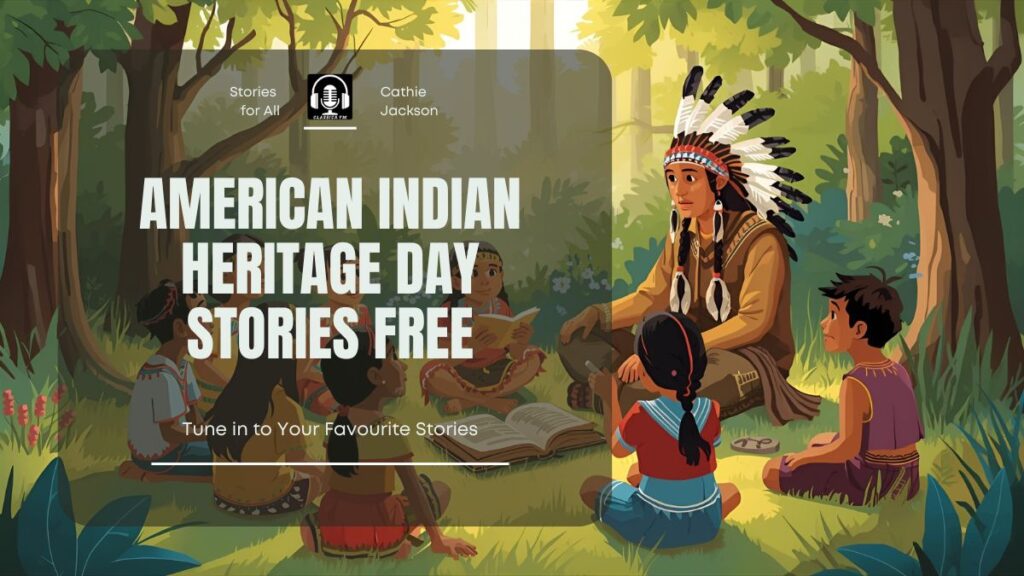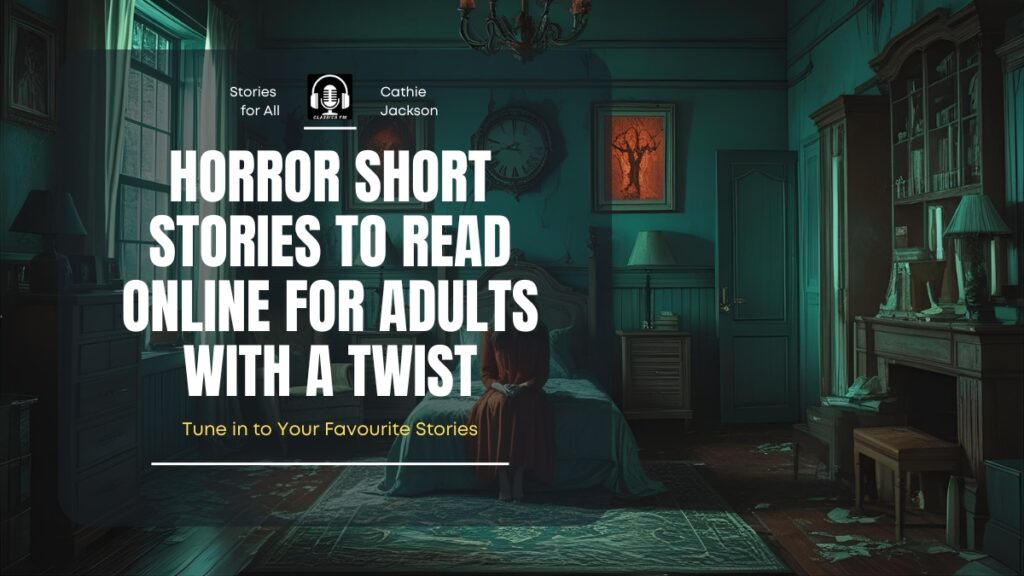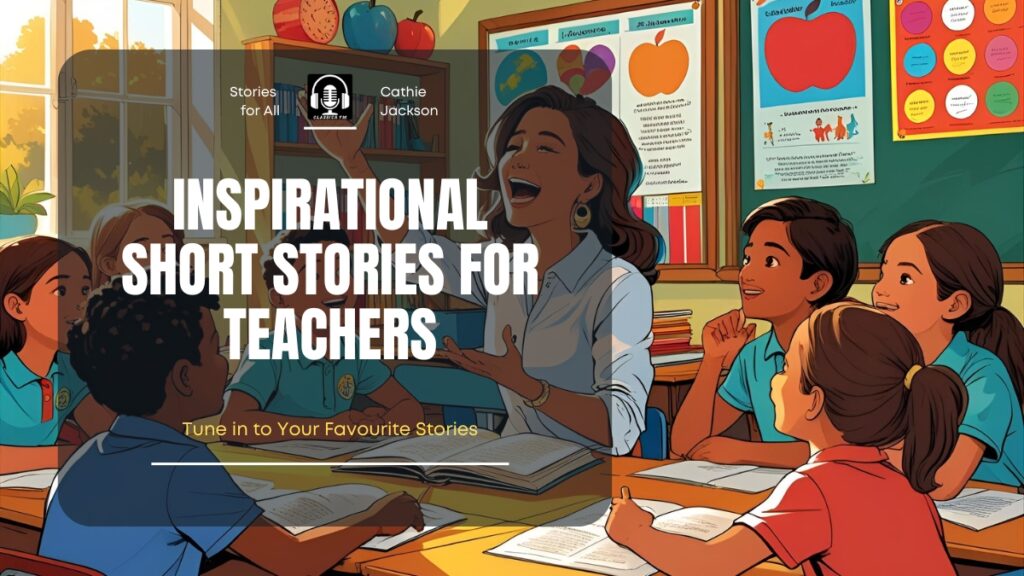American indian heritage day stories free are a powerful way to teach, celebrate, and preserve Indigenous cultures. Teachers, parents, librarians, and community leaders search for honest, accessible stories and ready-to-use activities.
This guide collects best practices, free story resources, lesson ideas, and tips for respectful use — all optimized to help readers and search engines find exactly what they need.
Why stories matter on American Indian Heritage Day
Stories are how many Indigenous communities pass values, history, and language across generations. On American indian heritage day stories free you can:
- Hear origin myths, trickster tales, and seasonal stories.
- Connect students to living cultures, not just the past.
- Use age-appropriate narratives for K–12 and community programs.
- Support language revitalization with bilingual or translated texts.
Stories create empathy and context. When paired with accurate background and community input, free stories become tools for education and celebration.
What “free” really means licensing and respectful reuse
Not every free resource is equal. When using American indian heritage day stories free, check:
- License type: Public domain, Creative Commons (CC BY, CC BY-SA), or publisher permission.
- Source authority: Created by Indigenous authors or community organizations versus appropriated content.
- Attribution requirements: How to credit creators and communities.
- Use limits: Classroom use, performance, or online redistribution.
Best practice: prioritize stories created or endorsed by Indigenous authors and organizations even when they’re free.
American Indian Heritage Day Stories Free
Stories are powerful. They carry songs, traditions, and memories from one generation to the next. On American Indian Heritage Day, we honor these stories. They are free to share, free to learn from, and free to keep alive.
1. The Talking Drum
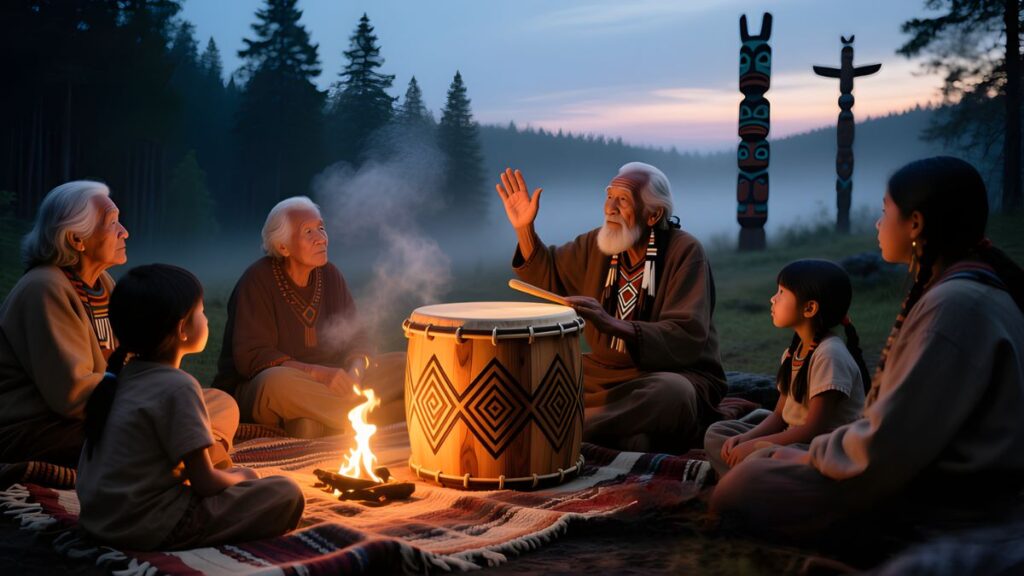
Eli woke up early. The sun was just rising. Light poured into his small room.
He stretched and looked around. Today felt special.
His grandfather called from the porch. “Eli, come see something.”
Eli ran outside. Birds chirped in the trees. The air smelled fresh.
His grandfather was carrying an old drum. It was dusty but beautiful.
“Where did you find that?” Eli asked.
“It belonged to my father,” his grandfather said. “And his father before him.”
Eli’s eyes widened. “Really? A family drum?”
His grandfather nodded. “Yes. It carries stories. It carries voices from long ago.”
Eli touched the drum carefully. The wood felt warm. The surface was smooth from use.
“Can I play it?” he asked, his voice full of excitement.
His grandfather smiled. “Yes. But first, listen.”
Eli tilted his head. He heard the wind. The birds. The rustle of leaves.
“These are the voices of our world,” his grandfather said. “The drum helps us hear them.”
Eli nodded slowly. He understood a little.
“Now, try to play a simple rhythm,” his grandfather said.
Eli tapped gently. The sound echoed through the trees.
He tapped again, a little faster. The sound felt alive.
His grandfather clapped along. “Good. Feel the heartbeat of our people.”
Eli felt proud. The drum sounded like a story.
“Long ago, drums were used to call the people together,” his grandfather explained.
“They told stories, celebrated victories, and honored the earth.”
Eli listened carefully. Each word seemed important.
“Drums carry more than sound,” his grandfather said. “They carry memory.”
Eli tapped again, slowly this time. Each beat felt like a step into the past.
He remembered stories his grandmother told. Stories of hunts, rivers, and stars.
“Try this,” his grandfather said. He tapped a rhythm.
Eli copied it. Left, right, pause, tap.
The rhythm echoed. Birds flew past. A squirrel stopped and watched.
Eli laughed quietly. It felt like the drum was alive.
“Drums speak in their own language,” his grandfather said.
“Each beat has a meaning. Listen with your heart, not just your ears.”
Eli nodded. He tapped again, more carefully.
He imagined his great-grandfather playing this same drum.
He imagined the village listening. Feeling the heartbeat through the sound.
The drum felt magical. It was old but full of life.
Eli’s grandfather told him a story. About a drum that called a village to help during a storm.
The villagers heard the sound. They ran to help each other.
“The drum reminds us to be brave and helpful,” his grandfather said.
Eli tapped harder now. He felt strong. He felt part of something bigger.
He remembered the story of the river. How his ancestors fished there. How the drum guided them home.
He tapped slowly, softly. The rhythm matched his heartbeat.
A gentle wind blew. Eli felt calm. The drum sang with him.
“Drums are teachers,” his grandfather said. “They teach patience, focus, and listening.”
Eli smiled. He realized he had learned a lot in just a few minutes.
He tapped again, faster this time. The sound bounced from tree to tree.
The birds sang along. A rabbit hopped close.
Eli laughed. The drum seemed to make everything alive.
His grandfather nodded. “You are learning. One day, you will teach others.”
Eli felt proud. He imagined children in the village listening to him play.
He tapped a rhythm for the morning sun. For the birds. For the trees.
He remembered the stories his grandmother told by the fire.
The drum seemed to hold those stories too.
Eli and his grandfather played together. Rhythm and echo filled the morning.
“Now,” his grandfather said, “let me tell you the story of the great hunt.”
Eli listened. Each tap of the drum matched the words.
He imagined hunters running through forests, calling to each other.
The drum told the story even without words.
Eli felt connected. To his grandfather. To the drum. To the ancestors.
He tapped slowly. He tapped fast. He tapped softly.
The drum sounded like laughter. Like footsteps. Like wind and rain.
“Music is memory,” his grandfather said. “Sound keeps our history alive.”
Eli’s friends came by. “What are you doing?” they asked.
Eli smiled. “I’m learning the talking drum,” he said.
“Can we try?” one friend asked.
His grandfather nodded. “Yes. But first, listen.”
The friends sat quietly. The wind blew. Birds sang. The drum waited.
Eli tapped slowly, then showed them a simple rhythm.
They copied him. They laughed. The drum echoed with joy.
Each child felt part of the story. Part of the drum’s heartbeat.
The village elders stopped by. They listened quietly.
“This is how our stories live,” one elder said. “Through hands, hearts, and sound.”
Eli felt proud. He realized the drum was more than an instrument.
It was a bridge to the past. A teacher of values. A keeper of stories.
They played together for hours. Sun climbed higher in the sky.
Eli imagined his ancestors smiling. Hearing the drum from above.
He tapped carefully, remembering the lessons. The stories. The heartbeat.
The wind whispered. Trees swayed. The drum’s voice mingled with the world.
Eli felt the drum in his bones. Its rhythm was part of him now.
He laughed. He cried a little. He felt joy and pride.
“Thank you,” he said to his grandfather. “I understand now.”
His grandfather smiled. “The drum is yours to keep learning from. One day, you will pass it on.”
Eli hugged the drum. He promised to honor it. To share its stories.
The day ended. The village returned to daily life.
Eli carried the drum inside. He cleaned it carefully. Placed it by the window.
He tapped softly at night. Moonlight shone on the wood.
The drum spoke quietly. Its rhythm matched his heartbeat.
Eli dreamed of ancestors, forests, rivers, and songs.
He dreamed of teaching others. Of sharing the drum’s heartbeat.
The talking drum was alive in him. Always ready to teach.
And he knew, in his heart, the stories would never be forgotten.
Activity Idea for Students:
- Draw or color your own “talking drum.”
- Write 2–3 sentences about what story it would tell.
- Share with a friend or class.
2. Grandmother’s Beads
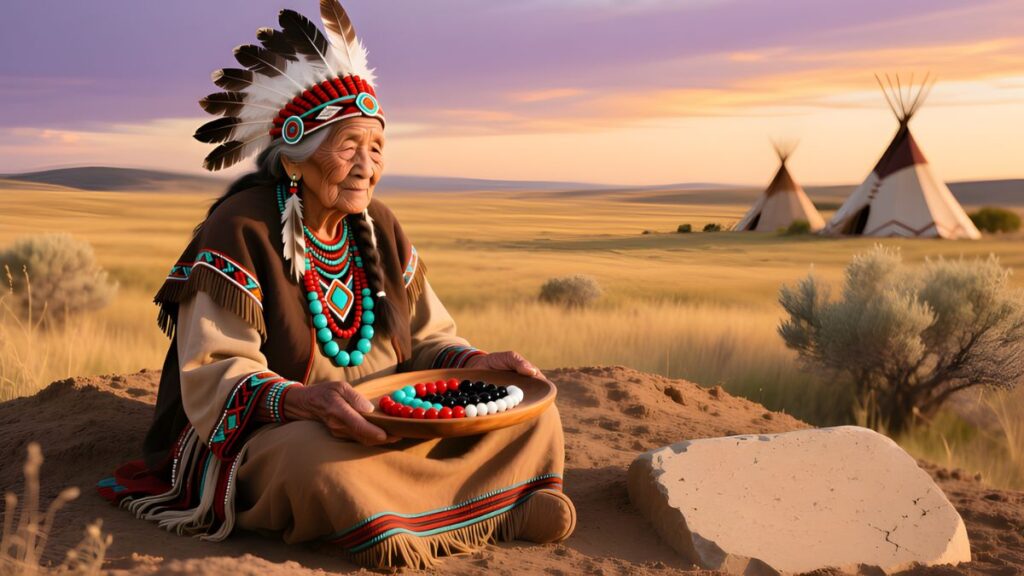
Lena woke up early. Sunlight peeked through the curtains. Birds chirped outside her window.
She ran downstairs. The smell of fresh bread filled the kitchen.
Her grandmother sat at the table. A small wooden box rested in front of her.
“What’s in the box?” Lena asked, eyes wide with curiosity.
Her grandmother smiled. “These are our story beads,” she said.
Lena’s eyes sparkled. The lid creaked as her grandmother opened the box.
Inside were tiny beads of every color. Red, blue, green, yellow, and purple.
Some were round. Some were shaped like leaves or stars.
Her grandmother picked up a red bead. “This one is for courage,” she said.
Lena held it carefully. “Courage?” she asked.
“Yes. Courage in hunting, courage in facing challenges, courage in learning,” her grandmother explained.
She picked up a blue bead. “This one is for the river.”
Lena’s eyes followed her grandmother’s hands. “The river?” she asked.
“Yes. It reminds us of the water that nourishes our land. It carries our stories and songs,” her grandmother said.
She handed Lena the bead. “Now you hold it too.”
Lena felt the smooth surface of the bead. It felt warm and alive.
Her grandmother began to string the beads onto a thin cord.
Each bead clicked softly as it slid into place.
Lena helped. She chose the next bead. It was yellow.
“This one is for celebration,” her grandmother said. “For festivals, dances, and happy moments.”
Lena smiled. She threaded the bead carefully.
The cord began to grow. A small necklace was forming.
Each bead told a story. Lena realized she was learning more than colors.
She learned lessons about family, courage, nature, and happiness.
Her grandmother picked up a green bead. “This one is for the forest,” she said.
Lena held it close. “The forest gives food and shelter. It is our teacher,” she whispered.
Her grandmother nodded. “Exactly. Every bead holds meaning. Every bead is a story.”
Lena paused. “Can I tell a story for a bead too?”
“Of course,” her grandmother said. “Stories live when they are shared.”
Lena picked a purple bead. “This one is for the stars,” she said.
Her grandmother smiled. “Tell me the story.”
Lena thought carefully. “The stars guided my great-grandmother on a long journey. She followed them and never gave up.”
Her grandmother nodded. “Beautiful. That story belongs on this necklace now.”
The beads clicked as Lena threaded it. She felt proud.
She picked another bead. Orange this time. “For laughter,” she said.
Her grandmother laughed. “Yes! Laughter is important. It keeps our hearts light.”
The necklace grew longer. Each bead a small memory. Each bead a lesson.
Lena’s fingers worked carefully. She learned patience and care.
Her grandmother told more stories as they worked. About hunts in the forest. About rivers and lakes. About festivals with music and dancing.
Lena listened. Each story added meaning to the beads.
Sometimes Lena picked a bead first. Then her grandmother told the story for it.
Other times, the story came first. Then Lena chose the bead to match.
Together, they created a necklace full of life and history.
The sun moved higher in the sky. Shadows shifted on the table.
The beads glowed softly in the morning light.
Her grandmother picked up a small silver bead. “This one is for wisdom,” she said.
Lena held it gently. “Wisdom from our elders?” she asked.
“Yes. Wisdom from listening, observing, and learning,” her grandmother said.
Lena threaded it carefully. She imagined herself sharing the wisdom one day.
The necklace was nearly finished. Each bead told a story. Each story felt alive.
Lena held the nearly completed necklace. It felt heavy with meaning.
Her grandmother added the last bead. A tiny golden one.
“This is for hope,” her grandmother said. “Hope for the future, hope for your journey.”
Lena smiled. She felt proud and full of warmth.
Her grandmother tied the ends of the cord. The necklace was complete.
Lena held it close to her heart. She felt connected.
Connected to her grandmother. Connected to her family. Connected to all the stories.
“Wear it always,” her grandmother said. “It carries the wisdom of our people.”
Lena put it on. The beads rested softly against her chest.
She closed her eyes. She felt the courage, the rivers, the forests, the stars, and the laughter.
Her grandmother watched. Her eyes shone with pride.
“Every time you look at it,” she said, “remember that stories live when they are remembered and shared.”
Lena nodded. She promised to honor the stories.
She imagined wearing the necklace on special days. Festivals, ceremonies, or just quiet afternoons.
The necklace reminded her to be brave, kind, and joyful.
Her grandmother told one last story. About a long journey across mountains and rivers.
Lena listened. Each bead seemed to glow as the story unfolded.
She realized that wearing the necklace was like carrying her family with her.
Each bead was a step along the path of life.
Each story was a guide for the journey.
The morning passed. Sunlight filled the room. Birds sang outside.
Lena and her grandmother worked quietly. Occasionally, they laughed or shared a story.
The necklace rested on the table between them. It shimmered in the light.
Lena imagined telling her own stories one day. Adding new beads for courage, joy, and hope.
Her grandmother smiled. “The necklace grows as your stories grow.”
Lena felt happy. She felt proud. She felt loved.
She picked up a bead. Red, for courage. She tapped it gently.
Her grandmother picked a blue bead. “For the river,” she said.
Together, they threaded a few more imaginary beads, laughing.
Lena realized that the real magic was not in the beads alone.
It was in the time spent together. The stories told. The love shared.
The necklace was a treasure. But so was the memory of making it.
She would remember today forever.
And she would share the stories, one bead at a time, with friends and family.
Each story a lesson. Each lesson a gift.
The necklace rested against her chest. It was more than jewelry.
It was family. Memory. Wisdom. Tradition.
Lena smiled. She hugged her grandmother.
“Thank you,” she whispered. “I will remember everything.”
Her grandmother nodded. “And I will always add stories with you.”
Together, they laughed softly. The beads glimmered in the sunlight.
The necklace carried the past, the present, and the promise of the future.
Lena felt proud. She felt happy. She felt connected.
The stories lived on, safe in the beads and in her heart.
Activity Idea for Students:
- Draw or color your own necklace.
- Assign a story or meaning to each bead.
- Write 2–3 sentences about why each bead is important.
3. The Cedar Tree’s Gift
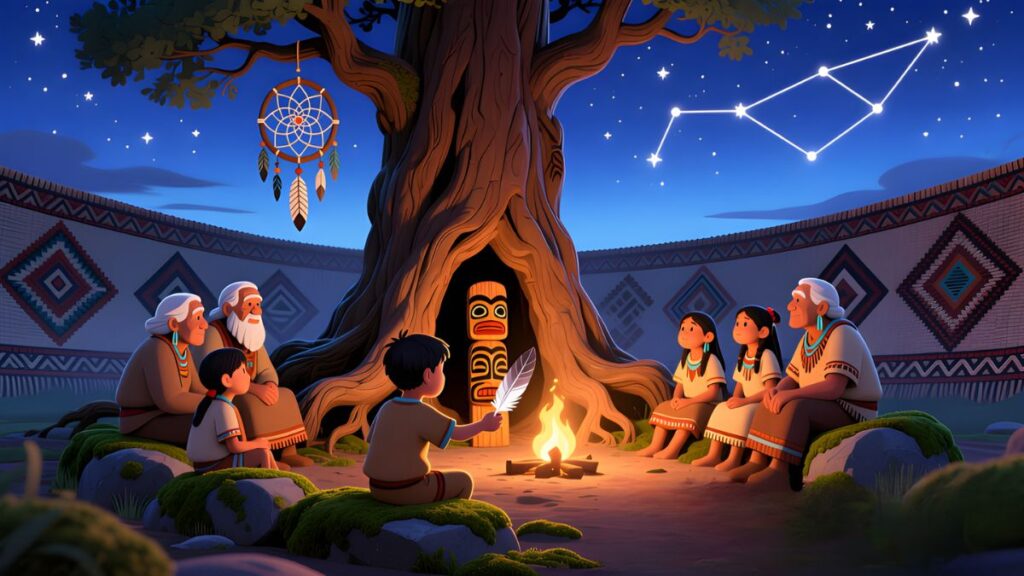
The summer was hotter than anyone remembered.
The sun burned bright in the sky.
The grass turned brown.
The river grew smaller each day.
In the village, people searched for shade.
But there were few trees left.
Noah sat near the edge of the field.
He was tired from the heat.
He wished for a cool place to rest.
Across the field stood a tall cedar tree.
Its branches spread wide like open arms.
Its needles shimmered green in the sun.
Noah walked toward it slowly.
When he reached the tree, he leaned against its trunk.
The bark felt rough, but the air felt cooler.
He closed his eyes.
The tree seemed to whisper.
At first, he thought it was the wind.
But then he listened carefully.
The sound was soft, like a gentle voice.
“Noah,” it seemed to say.
He opened his eyes in surprise.
“Who’s there?” he whispered.
The tree stood still.
Its branches swayed slightly in the breeze.
Noah pressed his hand against the bark.
The whisper grew clearer.
“I am the cedar. I have lived here for many years.”
Noah’s heart raced.
“You can talk?” he asked.
The whisper was calm.
“I carry many gifts. But people forget them.”
Noah thought carefully.
“What gifts?” he asked.
The cedar replied, “Medicine, wood, shelter, and shade. I give without asking.”
Noah listened closely.
He had never thought of trees this way before.
The cedar continued, “Long ago, your people respected the forest. They cared for it. Now many trees are gone.”
Noah felt a lump in his throat.
He remembered seeing empty fields where forests once stood.
The sun beat down again.
The cedar’s shadow stretched across Noah’s feet.
He whispered, “What can I do?”
The cedar seemed to sigh.
“Learn. Protect. Teach others. That is how the forest lives.”
Noah nodded slowly.
“I will try,” he said.
That evening, he went to see the elders of the village.
They sat together near the fire.
Noah told them about the cedar’s whisper.
Some shook their heads.
Others listened with thoughtful eyes.
An elder named Toma leaned forward.
“The boy speaks the truth,” he said.
“The cedar has always been sacred. It is medicine for the body and the spirit.”
Noah’s curiosity grew.
“What kind of medicine?” he asked.
Toma smiled gently.
“The cedar’s leaves can be brewed into tea. It helps with colds. Its smoke carries prayers upward. Its wood builds strong homes.”
The other elders nodded.
Another elder added, “We once used cedar branches in ceremonies. They cleanse and protect us.”
Noah’s eyes widened.
He felt respect grow in his heart.
“Why don’t we use cedar that way now?” he asked.
The elders looked sad.
“Many people forgot,” Toma said.
“They cut trees without thanks. They took without giving back.”
Noah thought of the hot summer days.
He thought of the small river.
He thought of the whispering tree.
“I want to protect it,” he said firmly.
The elders smiled.
“That is a good beginning,” Toma replied.
The next morning, Noah returned to the cedar.
He placed his hands on the trunk.
“I spoke with the elders,” he said softly.
The tree whispered back, “Good. Together, you can bring respect again.”
Noah decided to learn everything he could.
He spent days helping the elders gather herbs.
He learned which plants healed wounds.
He learned which barks made teas.
He learned songs that honored the earth.
At night, he returned to the cedar.
He shared what he learned.
The cedar listened.
Its branches swayed gently.
One day, Noah brought his friends to the cedar.
They sat in its shade.
He told them what the elders had taught him.
“The cedar is not just wood,” he explained.
“It is medicine. It is shelter. It is life.”
His friends touched the bark.
They smelled the needles.
They listened to Noah’s stories.
They began to understand.
The cedar whispered softly to Noah.
“You are keeping the promise.”
Noah felt proud.
But he also felt responsible.
One day, men from another village came.
They carried axes.
They looked at the cedar.
“This tree will make strong beams,” one said.
Noah’s heart raced.
He ran to the elders.
“They want to cut the cedar!” he cried.
The elders came quickly.
They stood in front of the tree.
“This cedar is sacred,” Toma said.
The men frowned.
“It is just wood,” one replied.
Noah stepped forward.
“No. It gives shade in the heat. It gives medicine when we are sick. It gives shelter when we are weak. It is not just wood.”
The men hesitated.
They looked at the elders.
They looked at the boy.
Finally, one lowered his axe.
“We did not know,” he said.
The others followed.
They left the cedar standing tall.
Noah sighed with relief.
The cedar whispered, “Well done, child.”
The whole village gathered that night.
They lit a fire near the cedar.
They sang songs of thanks.
They promised to care for the forest.
Noah felt joy rise inside him.
He knew this was just the beginning.
Seasons passed.
The village planted more trees.
Children learned the old stories.
They gathered cedar branches for ceremonies.
They brewed cedar tea when someone was sick.
The cedar grew stronger.
So did the people.
Noah often sat beneath its branches.
He listened to the whispers.
The cedar spoke less now.
But its presence was enough.
Noah no longer felt small.
He felt part of something bigger.
He carried the cedar’s gift in his heart.
Respect. Responsibility. Connection.
One day, Noah strung a necklace of cedar beads.
Each bead reminded him of a lesson.
He wore it proudly.
He taught others to make their own.
The forest grew greener.
The people grew wiser.
And the cedar tree stood tall, watching over them.
Its whisper carried through the leaves.
“Protect the earth. Protect each other.”
Noah nodded.
He had promised.
And he would keep that promise forever.
Activity Idea for Students
- Draw a cedar tree and label its “gifts” (medicine, wood, shade, shelter).
- Write 2–3 sentences about how we can protect nature today.
4. Firelight Story Circle
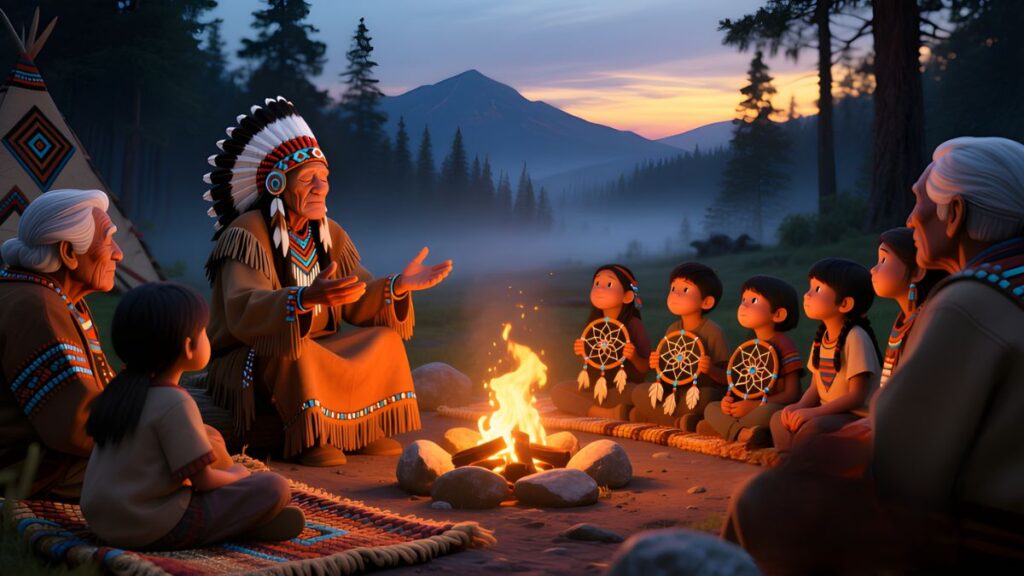
The night was cool.
The sky stretched wide above the village.
The stars began to shine.
Children hurried across the open field.
They carried blankets and little stools.
A fire crackled in the center.
Its glow painted the faces of those who gathered.
The elder, Grandmother Rose, sat near the fire.
Her hair was silver.
Her eyes sparkled like the night sky.
The children settled into a circle around her.
They whispered to each other, excited.
They knew it was story night.
Grandmother Rose lifted her hands.
The whispers quieted.
Only the fire popped and hissed.
She smiled gently.
“Tonight,” she said, “we will talk about the stars.”
The children leaned forward.
Their eyes reflected the flames.
Long ago, before lanterns and houses, the sky was dark.
The people asked, “How will we see at night?”
The animals asked, “How will we find our way?”
The earth was kind but quiet.
It needed light.
So, the Great Spirit reached into a basket of fire.
With a sweep of the hand, sparks flew into the sky.
Those sparks became the stars.
The children gasped.
They looked upward, trying to see the sparks themselves.
Grandmother Rose continued.
“The stars were gifts. Each one carried a story. Each one carried a lesson.”
She pointed to a cluster of stars.
“That group reminds us of the hunters. They watch over the land.”
She pointed to another.
“Those remind us of the sisters. They remind us of family.”
The firelight danced on her face.
The children listened in silence.
She told of a boy who followed the stars to find his way home.
She told of a girl who sang to the stars until they answered.
She told of animals guided by the shining lights.
Each story painted a picture in the children’s minds.
They could almost see the boy walking.
They could almost hear the girl singing.
They could almost feel the paws of the animals on the path.
The night grew darker.
The stars above seemed brighter.
Grandmother Rose paused.
She looked around the circle.
“Now it is your turn,” she said.
The children blinked in surprise.
“Our turn?” asked a small boy.
“Yes,” said Grandmother Rose.
“Stories do not only live in me. They live in you too.”
The children shifted nervously.
No one spoke at first.
Then, a girl named Alia raised her hand.
“I have a star story,” she said.
The circle grew quiet again.
Alia pointed to a star above the trees.
“That one is my friend,” she said softly.
“When I feel sad, I look at it. It blinks at me. It makes me feel less alone.”
The children nodded.
They understood.
Grandmother Rose smiled warmly.
“That is a good story. Simple. True. Beautiful.”
Another child spoke.
“I think that star over there is a firefly who flew too high,” he said.
The circle giggled.
He grinned.
“When the firefly wanted to come back, it was stuck. So it shines forever, reminding us to be careful when we fly too far.”
The children clapped.
Grandmother Rose laughed softly.
“Yes. A playful story. And a lesson too.”
One by one, the children shared.
Some stories were long.
Some were short.
Some were serious.
Some were funny.
One child said her star was a tear from the sky.
Another said his star was a spark from the first fire.
Another said stars were seeds planted in the heavens, waiting to grow.
The circle glowed with ideas.
The fire crackled louder, as if listening.
The stars twinkled brighter, as if smiling.
Grandmother Rose watched with joy.
Her heart was full.
When every child had spoken, she leaned forward.
She whispered, “Do you see? The stars live in all of you. Stories are not just for listening. They are for sharing.”
The children looked at one another.
They felt connected.
They felt proud.
Each had given a gift to the circle.
The fire softened to glowing embers.
The night grew quiet again.
But the children’s hearts were alive with stories.
They wrapped their blankets tighter.
They promised to keep the stories safe.
Grandmother Rose stood slowly.
Her shadow stretched across the firelight.
“Carry these stories with you,” she said.
“Tell them to your brothers, sisters, and friends. One day, tell them to your children.”
The children nodded.
They understood their role.
The stars above continued to shine.
The circle slowly broke apart.
Children walked home with their parents.
They whispered star stories to each other as they went.
Alia pointed to her special star again.
She smiled.
Her friend blinked back.
The boy who spoke of the firefly laughed quietly.
He imagined the firefly buzzing in the sky, lighting the night.
Each child carried their story home.
Each child carried a piece of the firelight.
The next morning, they told their families.
Soon, the whole village knew the stories.
The stories spread like sparks from a fire.
And each time the children looked up at night, they remembered.
The stars were not just lights.
They were stories.
They were lessons.
They were friends.
Grandmother Rose sat by her window that night.
She looked at the stars too.
She whispered, “Thank you.”
The stars twinkled back.
They were alive with stories.
And the stories would never end.
Activity Idea for Students
- Have each student choose a “star” and create their own story for it.
- Share stories in a class circle, like the children did around the fire.
- Write the stories down and create a “class constellation book.”
5. The Painted Moccasins

Aria sat on the porch.
Her moccasins rested on her lap.
They were plain brown, soft, and well-worn.
She loved them, but she wanted something more.
She wanted them to tell her story.
Her grandmother walked outside.
She carried a small box of paints.
The colors shone brightly in the sunlight.
Red. Blue. Yellow. Green. White. Black.
Grandmother placed the box on the porch.
“Today,” she said, “you will paint your moccasins.”
Aria’s eyes lit up.
“Paint them? Really?” she asked.
Her grandmother nodded.
“Each symbol you paint will tell a step of your journey. When you walk, your story will walk with you.”
Aria touched the smooth leather.
She imagined it covered in colors and shapes.
“Where do I begin?” she asked softly.
Her grandmother smiled.
“Begin with your heart. What is the first step you want to remember?”
Aria thought carefully.
Her mind drifted to the river.
She remembered swimming with friends on warm summer days.
The cool water carried laughter.
She picked up the blue paint.
With a small brush, she painted a flowing line.
“This is the river,” she said proudly.
Her grandmother nodded.
“A good beginning.”
Aria dipped her brush in green next.
She thought of the meadow.
She remembered dancing barefoot in the tall grass.
The wind carried music that only she could hear.
She painted small green swirls near the river line.
“This is the meadow where I danced,” she whispered.
Her grandmother leaned closer.
Her eyes sparkled.
“Beautiful,” she said. “Now what comes next?”
Aria smiled.
She thought of the path to her school.
Every morning, she walked it with her brother.
They laughed, carried books, and raced each other.
She picked up brown paint.
She drew a narrow line, winding upward.
“This is the path to school,” she said.
Her grandmother touched her shoulder gently.
“Every step matters,” she said.
Aria’s heart felt warm.
She kept painting.
A red circle appeared.
“This is the sun,” she explained.
“It warms me when I feel cold.”
Next, she added a small yellow flower.
“This is for joy,” she whispered.
She painted a white star.
“This is for my dreams.”
She added a black feather.
“This is for strength.”
Her moccasins began to fill with meaning.
Every mark told a piece of her life.
Her grandmother watched silently, smiling.
Aria worked with care.
She did not rush.
Each symbol was chosen with love.
Each color carried memory.
When she finished, she leaned back.
Her moccasins were no longer plain.
They were alive with stories.
She slipped them onto her feet.
The colors glowed in the sunlight.
She stood and took a step.
The river walked with her.
The meadow danced with her.
The path to school carried her forward.
The sun warmed her.
The flower made her smile.
The star guided her dreams.
The feather gave her courage.
Her grandmother clapped softly.
“Now you walk in your own story,” she said.
Aria twirled in the yard.
Her moccasins flashed with every movement.
She laughed with delight.
Her grandmother laughed too.
Neighbors passing by stopped to look.
“Aria, your moccasins are beautiful,” one woman said.
“They tell my story,” Aria replied proudly.
The woman smiled.
“That is the best kind of beauty.”
Aria wore her painted moccasins everywhere.
At school, her friends asked about the symbols.
She explained each one carefully.
They listened with wide eyes.
Some wanted to paint their own shoes too.
Her teacher noticed the joy it brought.
She invited Aria to share her moccasins in class.
Aria stood at the front proudly.
She pointed to the river.
She told of swimming with friends.
She pointed to the meadow.
She told of dancing in the grass.
She pointed to the path.
She told of walking to school.
She pointed to the sun, the flower, the star, the feather.
Each symbol became a story.
Each story made her classmates smile.
Her teacher clapped.
“Thank you, Aria,” she said.
“You reminded us that every step matters.”
Aria blushed, but her heart was strong.
That evening, she returned home.
Her grandmother waited on the porch.
“Well?” she asked.
Aria smiled.
“They loved the stories,” she said.
Her grandmother nodded.
“Stories are gifts. When you share them, you give part of yourself. And you also receive part of others.”
Aria looked down at her moccasins.
The paint had dried, but the colors looked brighter than ever.
She whispered, “Every step is a gift.”
Her grandmother touched her hand.
“And every gift is a step.”
The stars appeared above.
Aria sat quietly, staring at them.
She thought about painting stars on her moccasins too.
Maybe tomorrow.
She smiled.
Her journey had only begun.
Activity Idea for Students
- Draw or color your own pair of moccasins.
- Add symbols that represent your life: a favorite place, a family tradition, a dream.
- Share the symbols with the class in a short “story walk.”
6. The Eagle Feather Promise
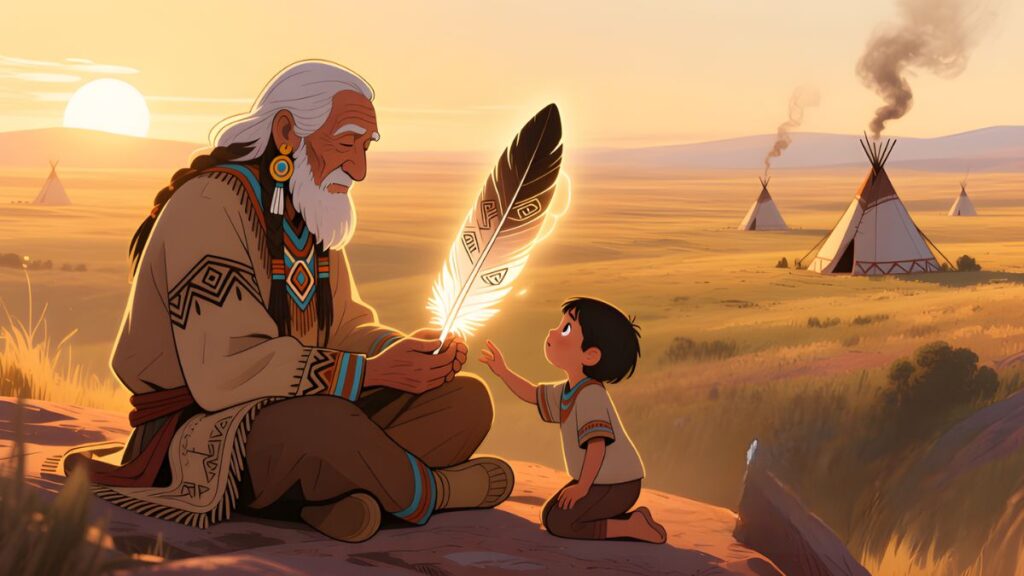
The morning sun rose gently.
The grass sparkled with dew.
Birds sang from the trees.
A young boy named Kai walked along a quiet path.
He liked to wander early, before the world grew noisy.
As he walked, something caught his eye.
It lay softly on the ground.
An eagle feather.
It glowed in the light.
Kai froze.
He bent down and picked it up.
The feather felt smooth and strong in his hands.
He looked around.
The sky stretched wide and endless.
He wondered if the eagle still flew above.
Kai held the feather carefully.
He remembered hearing that eagle feathers were sacred.
They were not just feathers.
They were gifts.
But he was not sure what to do.
Should he keep it?
Should he return it?
Should he leave it?
His heart beat quickly.
He decided to ask his uncle.
His uncle was wise.
He knew the old stories.
Kai ran to his uncle’s house.
He knocked on the wooden door.
His uncle opened it slowly.
Kai held out the feather.
“Uncle,” he whispered. “I found this.”
His uncle’s eyes widened.
He took the feather gently.
He nodded with respect.
“This is an eagle feather,” his uncle said softly.
“It is a gift from the sky.”
Kai stared at it.
“What does it mean?” he asked.
His uncle placed a hand on his shoulder.
“Eagle feathers are not toys. They are symbols. They carry lessons.”
“What kind of lessons?” Kai asked.
“Honesty,” his uncle said. “Courage. Respect. The eagle flies highest. It sees everything. It reminds us to live in truth.”
Kai listened closely.
His heart felt heavy and light at the same time.
“What should I do with it?” he asked.
His uncle smiled gently.
“You cannot just ‘keep’ an eagle feather. You must carry it with honor. You must make a promise.”
Kai frowned a little.
“A promise?”
“Yes,” his uncle said. “A promise to live with respect. To walk with honesty. To show courage when it is hard.”
Kai looked down at the feather.
It glowed in his hands.
“I want to make that promise,” he said quietly.
His uncle nodded.
“Then speak it aloud.”
Kai took a deep breath.
He held the feather to his chest.
“I promise,” he said.
“I promise to live with respect. I promise to be honest. I promise to be brave, even when I feel small.”
The words felt strong.
They filled the room like sunlight.
His uncle smiled.
“Now the feather has meaning,” he said.
“It is not just found. It is earned.”
Kai nodded.
He felt taller somehow.
He tucked the feather safely in a small wooden box.
His uncle said, “Keep it close. Let it remind you each day.”
That evening, Kai thought about the promise.
Respect.
Honesty.
Courage.
He wondered how he would live those words.
The next day, he tried.
At school, a friend dropped his book.
Others laughed.
Kai bent down, picked it up, and handed it back.
“That was kind,” his friend said.
Kai touched the box in his pocket.
The feather was there.
It reminded him of respect.
Later, another boy told a lie to avoid trouble.
Kai thought about doing the same.
But then he remembered the feather.
He told the truth instead.
It was not easy.
But it felt right.
That night, he told his uncle.
His uncle smiled.
“The eagle feather guided you.”
Kai nodded.
He felt proud.
Weeks passed.
Kai kept the feather close.
Each day, he remembered the promise.
Sometimes it was hard.
Sometimes it was easy.
But always, the feather reminded him.
One afternoon, his class went on a hike.
The path was steep.
Some children grew tired.
Kai wanted to stop too.
But he looked at the sky.
An eagle circled above.
It seemed to watch him.
Kai stood straighter.
“I can do this,” he whispered.
He helped others up the hill.
At the top, the view spread wide.
The wind brushed his face.
The eagle flew higher.
Kai touched the feather in his pocket.
“I am brave,” he said.
From that day, people noticed changes in him.
He was kinder.
He was more honest.
He spoke up when others were silent.
He stood tall, even when afraid.
His teacher called him a leader.
Kai shook his head.
“I am just keeping my promise,” he said.
His uncle smiled.
“That is what a leader does.”
One evening, his grandmother visited.
She saw the feather.
She touched it gently.
“You carry it well,” she said.
Kai nodded.
“I promised,” he whispered.
She kissed his forehead.
“The eagle is proud.”
Kai looked at the feather.
It no longer felt like just a feather.
It felt alive.
It felt like a guide.
It reminded him that every step mattered.
He carried it not only in his pocket but in his heart.
The promise became part of him.
And every time he looked up at the sky and saw an eagle, he smiled.
He whispered, “I will keep the promise.”
Always.
Activity Idea for Students
- Draw a feather and color it with symbols that show honesty, courage, and respect.
- Write a short promise in English about how you want to live these values.
- Share the promise with a partner or group.
7. The River’s Song
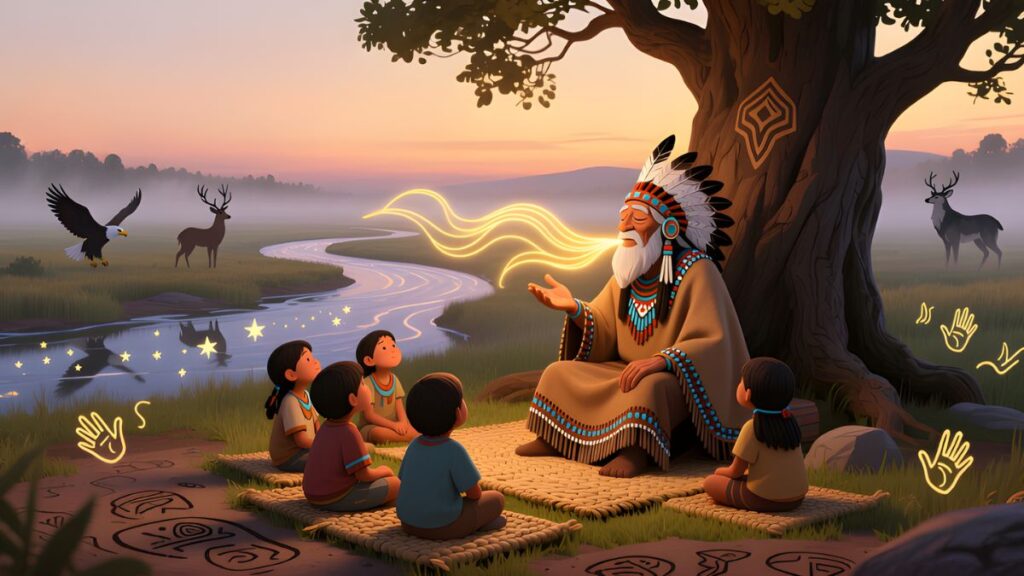
Maya loved the river.
She visited it almost every day.
The river was wide.
Its surface sparkled in the sunlight.
It carried water that flowed strong and steady.
Sometimes fast.
Sometimes slow.
But always moving.
Maya liked to sit on the bank.
She watched the ripples.
She listened to the gentle splashes.
It felt like the river was alive.
She often wondered what secrets it kept.
One warm evening, the sky turned golden.
The air was soft and still.
Maya sat quietly on the grass.
The river glowed with light.
She leaned closer.
She thought she heard something new.
A hum.
A rhythm.
A song.
Her heart skipped.
The river was singing.
She closed her eyes.
The sound grew clearer.
It was not just water rushing.
It was voices.
Soft.
Strong.
Together.
Maya listened, amazed.
She could almost hear words.
She ran to find her grandmother.
“Grandma,” she said quickly. “The river is singing!”
Her grandmother smiled gently.
She held Maya’s hand.
“Come,” she said. “Let us listen together.”
They walked back to the river.
The sun dipped lower.
The water shimmered.
They sat side by side.
“Do you hear it?” Maya whispered.
Her grandmother nodded.
“Yes. The river sings. It always has.”
Maya’s eyes grew wide.
“What does it sing?”
Her grandmother looked at the flowing water.
“The river carries voices,” she said.
“Not just water. Not just fish. Not just boats.”
“It carries the voices of our ancestors.”
Maya felt a shiver.
“Our ancestors?” she asked.
“Yes,” said her grandmother.
“Long ago, our people lived beside this river.”
“They fished in it. They paddled their canoes. They prayed to its waters.”
“Their songs and prayers became part of the river.”
Maya listened again.
She thought she could hear laughter.
Shouts of children.
Whispers of prayers.
Strong voices singing.
Her grandmother placed a hand on her shoulder.
“When you listen, you do not just hear water. You hear belonging. You hear memory. You hear heritage.”
Maya closed her eyes.
The sound filled her heart.
It was deep.
It was old.
It was endless.
She felt connected.
She felt rooted.
Like the river was part of her.
Like she was part of the river.
That night, Maya could not stop thinking.
She thought of the people who once walked here.
She imagined them catching fish.
She imagined them paddling across the current.
She imagined them singing together at dusk.
She felt close to them.
Closer than ever before.
The next day, Maya returned.
She sat by the bank.
This time, she brought paper and pencil.
She began to draw the river.
She drew the ripples.
She drew canoes.
She drew people smiling.
She wanted to keep the memory alive.
Her grandmother joined her.
“That is good,” she said. “Art carries stories too.”
Together they watched the water.
Her grandmother told old tales.
She spoke of a boy who caught the biggest fish.
She spoke of a woman who sang to the stars.
She spoke of a man who carved a canoe from a single tree.
Maya listened, wide-eyed.
Each story felt like part of the song.
Each story gave the river new meaning.
She realized something.
The river was not just outside of her.
It was inside of her.
Its stories ran through her veins.
Its strength filled her spirit.
Weeks passed.
Maya returned often.
She wrote poems.
She sang songs.
She whispered thanks.
Each time, she felt closer to her ancestors.
One afternoon, her class came for a field trip.
The teacher asked, “What do you see?”
Some students said, “Water.”
Some said, “Fish.”
Some said, “Trees.”
Maya raised her hand.
“I hear voices,” she said.
The class laughed a little.
The teacher asked, “What do you mean?”
Maya smiled.
She pointed to the river.
“This river carries the voices of our ancestors. If you listen, you can hear their stories. They belong here. And so do we.”
The class grew quiet.
Some students closed their eyes.
They listened carefully.
The water moved.
The air hummed.
For a moment, they too felt it.
A song.
The teacher nodded.
“That is a beautiful way to see the world, Maya.”
Maya felt proud.
She was sharing the river’s gift.
That evening, her grandmother hugged her.
“You are becoming a storyteller,” she said.
Maya’s eyes shone.
She realized the river had given her a task.
To carry the voices forward.
To share the belonging.
To keep the heritage alive.
She promised to do so.
Not just today.
Not just tomorrow.
But always.
Every time Maya visited, she whispered the same words.
“I belong here. I carry the river’s song.”
The river answered with ripples.
And its song flowed on.
Forever.
Activity Idea for Students
- Draw a river on paper and add symbols or images that show people, stories, and traditions connected to it.
- Write a few lines in English about what “the river’s song” means to you.
- Share with the class, creating your own story circle.
Quick-start list: Where to find American indian heritage day stories free
Use this checklist to locate high-quality free content for events and lessons.
- Indigenous authors’ blogs and community sites (local tribal pages).
- Tribal education departments and cultural centers.
- Public-domain collections (older translations) — handle with care.
- Museum education pages (look for the National Museum of the American Indian and state museums).
- Library digital collections and downloadable PDFs.
- Open educational resources (OER) repositories with CC licenses.
When downloading, always verify authorship and whether the story reflects living community values.
Sample lesson plan using American indian heritage day stories free (grades 3–5)
Objective: Students will read a traditional story, identify its theme, and create an art response.
Materials: A free story (print or PDF), paper, colors, reflection worksheet.
Steps:
- Read aloud a selected American indian heritage day stories free text (10–15 min).
- Discuss setting, characters, and lessons (10 min).
- Group activity: Students illustrate one scene and write a single-sentence caption (20 min).
- Closing: Share illustrations and mention the story’s origin and author (10 min).
Assessment: Short reflection — “What did this story teach me?” — and citation of the source.
Example activities for different age groups
Early years (K–2)
- Story circle with picture cards.
- Simple craft tied to a story symbol (e.g., feather or turtle).
Upper elementary (3–5)
- Compare two stories from different tribes.
- Map activity: mark the story’s cultural region.
Middle & high school (6–12)
- Research the author/community and write a short report.
- Analyze themes, colonial impact, and preservation efforts.
All activities work well with American indian heritage day stories free when paired with context and respectful attribution.
Case study: A classroom that used free stories respectfully
A 5th-grade teacher used American indian heritage day stories free sourced from a state tribal education website. Steps they took:
- Choose a story with clear tribal attribution.
- Contacted the tribal education office to confirm classroom use.
- Invited a cultural educator (virtual) to speak.
- Students created posters that included the story’s name, author, and tribe.
Result: Students reported better understanding of the story’s cultural meaning and respect for proper crediting.
Tips for vetting and curating free stories
When curating American indian heritage day stories free, follow these rules:
- Prioritize Indigenous authors and tribal authorization.
- Avoid romanticized or stereotypical retellings.
- Check for up-to-date context and translations.
- Prefer resources with teaching notes or provenance.
- When in doubt, reach out to tribal cultural departments.
Curating thoughtfully protects communities and promotes accurate learning.
Writing inclusive lesson notes and trigger warnings
Some traditional stories discuss sensitive topics (loss, displacement, violence). When using American indian heritage day stories free:
- Provide a brief content note at the start.
- Offer alternative stories for sensitive readers.
- Encourage reflective discussion and respectful questions.
This creates a safe learning environment and models responsible education.
Bilingual and language-revitalization resources
Many free resources include Indigenous languages or bilingual text. Use American indian heritage day stories free that:
- Present original language terms with pronunciation guides.
- Include translations and language notes.
- Link to tribal language programs for further study.
Promoting language content supports cultural resilience.
Activities to extend storytelling beyond reading
- Oral storytelling circle: Invite students to retell the tale in their own words.
- Drama & role-play: Act out scenes to explore emotion and choices.
- Creative writing prompts: Rewrite the story’s ending from another character’s view.
- Community projects: Pair with local Indigenous groups for a reading event.
These deepen engagement with American indian heritage day stories free and build active learning.
Digital use: adapting free stories for online events
For virtual heritage day events using American indian heritage day stories free:
- Use slides with images and correct attributions.
- Host virtual guest storytellers with prior permission.
- Share download links to source pages (not unauthorized scans).
- Caption videos for accessibility and include audio descriptions.
Offer clear credit lines and follow license terms when distributing digitally.
Suggested reading list (free or low-cost options)
Below are recommended types of sources to search for American indian heritage day stories free:
- Tribal cultural center PDFs and story archives.
- Public library eBook collections with Indigenous works.
- University special collections that host digitized Indigenous oral histories.
- Museum education pages that publish teacher packets.
When searching, pair the phrase American indian heritage day stories free with specific tribe names or age groups to find focused materials.
Frequently Asked Questions (FAQs)
Can I print and distribute free stories in my classroom?
Check the license. Public domain or CC BY materials usually allow printing with attribution. Always credit the author and tribe.
Are there free audio recordings available?
Yes, some tribal sites and libraries provide audio recordings. Use them with permission and proper credit.
How do I avoid cultural appropriation using free stories?
Use materials by Indigenous creators, seek permission when possible, and include community context and voices.
Where can I find stories for young children?
Look for picture-book PDFs from Indigenous authors, museum pages, and children’s literacy programs run by tribes.
Are translations reliable?
Verified translations should indicate the translator. Prefer materials produced by or with tribal input.
Measuring impact: data & assessment ideas
To measure learning outcomes from American indian heritage day stories free activities, track:
- Student reflections and comprehension checks.
- Pre/post surveys on cultural understanding.
- Participation in discussions or events.
- Community feedback when working with tribal partners.
Collecting simple metrics helps refine future lessons and honors community goals.
Conclusion
These American Indian stories are living traditions, not museum pieces. They connect past and present, teach values like respect and reciprocity, and invite curiosity.
What they give us
- A link between generations.
- Everyday lessons in choices and care.
- A deeper sense of place.
How to honor them
- Credit storytellers and avoid treating sacred tales as spectacle.
- Invite community voices (elders, storytellers) whenever possible.
Quick ways to use them
- Open with a sincere land acknowledgment.
- Have listeners retell the story and say what they learned.
- Do a short follow-up activity: drawing, nature walk, or a simple craft.
Reading these stories makes you part of the next link in their chain. Listen well, act respectfully, and keep learning.

